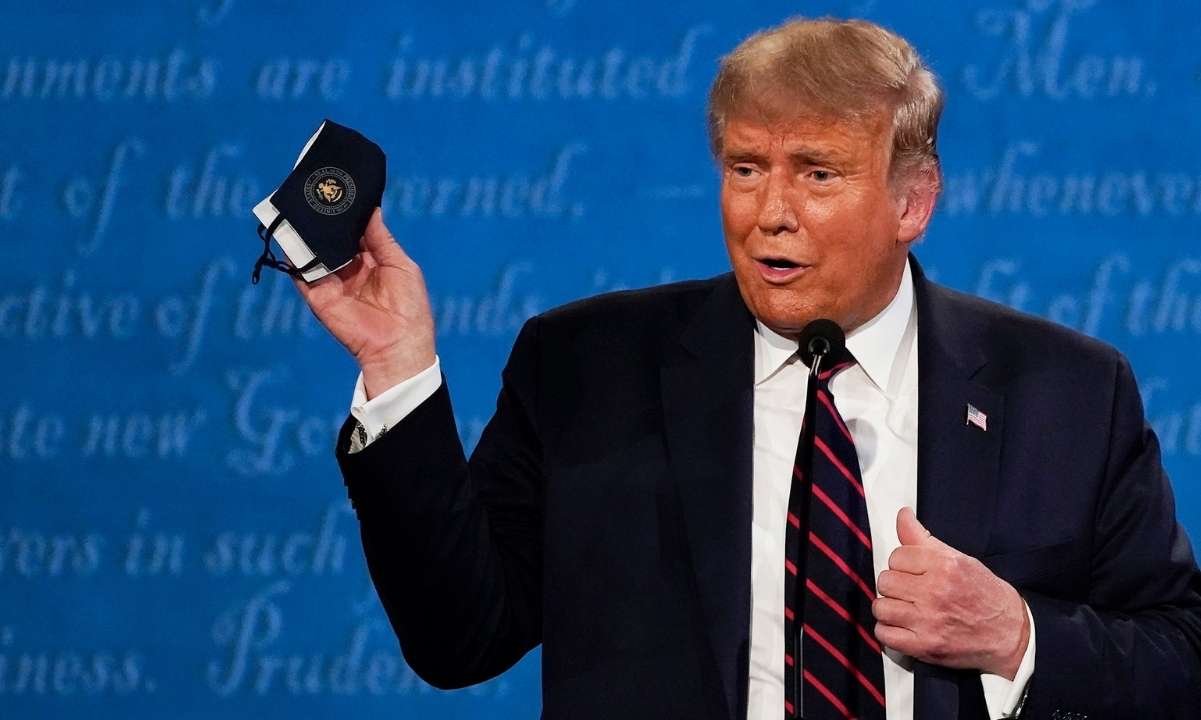Cryptocurrency
Maddow Slams Trump and Calls Bitcoin ‘Scam’ – She Got These 5 Facts Wrong

The Rhodes Scholar and liberal media commentator said in a segment that aired Thursday, March 6, that cryptocurrency is a scam. She also slammed the White House for “playing this game.”
MSNBC Host Rachel Maddow calls Trump’s Strategic Bitcoin Reserve a ‘deeply old-fashioned simple scam.’
She draws a striking comparison between crypto and Beanie Babies, saying, “Cryptos operate on the same idea. They have no inherent value at all, but people speculate, hoping… pic.twitter.com/KnJrRWRnDd
— Coin Bureau (@coinbureau) March 8, 2025
President Donald Trump signed an executive order earlier that day establishing a national digital asset reserve.
White House crypto czar David Sacks said, “The US will not sell any Bitcoin deposited into the Reserve. It will be kept as a store of value. The Reserve is like a digital Fort Knox for the cryptocurrency, often called ‘digital gold.’”
“It’s worth looking at this crypto thing a little bit,” Maddow said on her show. “Only because it is a deeply, deeply old-fashioned simple scam. At this point, which points right to the White House.”
Here’s what Maddow said about Bitcoin and what she got wrong.
1. Unlike Beanies, Bitcoin’s Price Goes Up
“Helpfully, the broad strokes of crypto trading are not complicated,” Maddow said. “It’s like when there was the Beanie Baby craze in the late 1990s.”
“It was a Beanie Baby trading bubble,” she explained. “Other than some emotional value if you had one as a child, Beanie Babies did not have much inherent value.”
“But it was worth buying up a bunch of them because there was speculation on the premise that as collectibles, maybe one day your Beanie Babies collection could be worth a lot of money.”
There is, however, a key difference between Bitcoin and Beanie Babies. While Beanie Babies debuted in 1993 at the World Toy Fair in New York City, this toy fad reached its height six years later in 1999.
Following the dot com crash in 2000, the auction price frenzy for Babies never recovered to those levels again.
To get a realistic idea of the aftermarket value of stuffed toys, one need only study a local thrift store in their city. But unlike Beanie Babies, Bitcoin’s price has been going up ever since it launched on Jan. 3, 2009.
That’s 16 years of growth in daily exchange rate for the dollar that dwarves comparable ROIs from the highest- flying tech stocks in the stock market’s entire history.
During its periodic bear markets, which have so far occurred on a fairly predictable 4-year cycle, critics have repeatedly called Bitcoin a fad and declared it dead.
But every time the skeptics have turned out wrong when the price sets new all-time high records within four years. When it comes to historical records, there is no sensible comparison between Beanie Babies and Bitcoin.
While the toy collectibles peaked in 1999 and never recovered, Bitcoin created 84,000 new crypto millionaires in 2024, according to a report on CNBC.
2. Beanie Babies Markets Are Not Liquid or Transparent
“Cryptocurrencies operate on the same idea,” Maddow went on in her segment to say.
“They have no inherent value at all. The only value they have is that if you have some reason to believe that somebody else might want to buy them from you in the future.”
“What that means in very practical terms is that convincing other people that your crypto is popular and in demand— that is key to actually making money.”
But it’s not true that cryptocurrencies operate on the same idea as toy and fashion manias or that assets like Bitcoin have no inherent value.
Beanie Babies are not a financial product and do not bear qualities that would make them suitable for use as one. It is not as easy as sending an email to exchange a truckload of toy plushies, but it is very nearly that easy to exchange Bitcoin.
It’s also unfeasible to keep track of how many Beanie Babies are in the market and post up-to-the-minute daily trading data about each one.
It is not only feasible with Bitcoin and other cryptos like the ones going in the national reserve— computer developers engineered them that way.
That’s part of the value they provide that makes it possible to use these digital commodities as financial products and investment vehicles: liquidity and transparency.
3. Beanie Babies Are Not Durable and Fungible Like Crypto
Meanwhile, Beanie Babies are not durable and fungible like cryptocurrencies. Who wants someone else’s stuffed toy that they’ve been blowing their nose on and rubbing Cheeto grease into?
These inventories have market values that are highly sensitive to wear and tear, and the products are very vulnerable to deteriorating into a condition with a resale value marked well below retail.
Even when maintained in mint condition, after-market values for toy collectibles are more like the market for used automobiles. After being driven off the lot, they immediately and sharply depreciate.
The inventors of crypto assets BTC, on the other hand, paid careful attention to designing their economics or “tokenomics” to optimize them for resale value over time and for the foreseeable future.
Cryptocurrencies like the two mentioned above have supply limits that introduce scarcity economics. They are also not subject to deteriorating physical condition.
In fact, any unit of Bitcoin is always equal to any other equivalent unit in market value. This is called fungibility, and it is a system requirement for an asset to function as a currency.
4. Beanie Babies Are Not Scarce Like Bitcoin
“The idea of hyping cryptocurrency is that people should buy in soon, right?” Maddow continued on her show.
“Get in on the ground floor while it’s cheap because it’s about to go way up in value because there’s so much interest in it. If you get in on the ground floor now, then you’ll make a bundle. It’s the whole hype. It’s the whole scam.”
While it is true that participants in crypto markets may engage in inauthentic, hyped-up marketing tactics, that doesn’t make the underlying assets a scam.
Nor does it mean there aren’t more intelligent reasons why financial geniuses like BlackRock’s Larry Fink, Shark Tank panelist Kevin O’Leary, or Strategy’s Michael Saylor believe investing in Bitcoin and the blockchain is not only not a scam— but the next phase of developing the Internet and human civilization.
5. Bitcoin Commands Real Demand, Not Just Hype
After making all these mistakes in her broadcast, Maddow finally undid her own case completely with her closing thoughts on this segment.
“Imagine Trump had just announced that the US government was going to buy up tons of Beanie Babies,” the MSNBC host said. “We are going to establish a federal government reserve of billions of Beanie Babies.”
“What do you think would happen to the value of Beanie Babies? Turns out there’s a huge guaranteed buyer for these things. They’re buying billions of them.”
The answer to her question is: Their value would probably go up like most analysts expect of Bitcoin. Since there’s a huge guaranteed buyer and that buyer is the US government.
Not bad for a scam.
Binance Free $600 (CryptoPotato Exclusive): Use this link to register a new account and receive $600 exclusive welcome offer on Binance (full details).
LIMITED OFFER for CryptoPotato readers at Bybit: Use this link to register and open a $500 FREE position on any coin!
Cryptocurrency
Ethereum Foundation, Whales, and Hackers: What’s Driving the ETH Sell-Off?

TL;DR
- Whales, hackers, and the Ethereum Foundation wallets moved over $500M in ETH through large sales and withdrawals.
- Ethereum transfers rose to 4.6M ETH, nearing the monthly high of 5.2M recorded in July.
- Staking inflows hit 247,900 ETH, the highest in a month, locking more supply from trading.
Large Withdrawals and Whale Activity
Ethereum (ETH) has seen heavy movement from major wallets over the past few days. On-chain data from Lookonchain shows a newly created wallet pulled 17,591 ETH, worth $81.62 million, from Kraken in just two hours.
Over three days, two new wallets withdrew a combined 71,025 ETH, valued at $330 million, from the exchange.
One of these wallets, address 0x2A92, has withdrawn 53,434 ETH, worth $242.34 million, in two days. This includes a recent purchase of 30,069 ETH, valued at $138.46 million, during a market drop.
Major ETH Holders Offload Millions Amid Price Rally
In contrast, several separate entities have been disposing of some ETH holdings. A wallet tied to a hacker address 0x17E0 sold 4,958 ETH for $22.13 million at $4,463, securing a profit of $9.75 million. Earlier this year, the same address sold 12,282 ETH at $1,932 and later bought back part of the amount at higher prices.
A different whale sold 20,600 ETH for $96.55 million over the past two days, generating a profit of more than $26 million after holding the position for nine months.
Meanwhile, an Ethereum Foundation-linked wallet, 0xF39d, sold 6,194 ETH worth $28.36 million in the last three days at an average price of $4,578.
Recent sales from the same wallet included an additional 1,100 ETH and 1,695 ETH for over $12.7 million combined.
The #EthereumFoundation-linked wallet(0xF39d) sold another 1,300 $ETH($5.87M) at $4,518 ~11 hours ago.
Over the past 3 days, this wallet has sold a total of 6,194 $ETH($28.36M) at an average price of $4,578.https://t.co/4hfCWymHVG pic.twitter.com/ErUyEY8SJy
— Lookonchain (@lookonchain) August 15, 2025
Network Activity on the Rise
CryptoQuant data shows Ethereum’s total tokens transferred have been climbing since August 9. After ranging between 1 million and 3 million ETH through late July and early August, transfers have risen to 4.6 million ETH, approaching the monthly high of 5.2 million recorded in mid-July. This increase has occurred alongside a price rally from about $3,400 to $4,600.
Interestingly, staking inflows generally stayed between 20,000 and 80,000 ETH per day over the past month. On August 14, inflows jumped to 247,900 ETH, the highest in the period.
At the time, ETH was trading near $4,600. Large staking deposits reduce the amount of ETH available for immediate trading, as staked coins are locked for a set period.
In the meantime, ETH trades at $4,647 with a 24-hour volume of $68.25 billion, down 2% on the day but up 19% over the week.
Binance Free $600 (CryptoPotato Exclusive): Use this link to register a new account and receive $600 exclusive welcome offer on Binance (full details).
LIMITED OFFER for CryptoPotato readers at Bybit: Use this link to register and open a $500 FREE position on any coin!
Cryptocurrency
Massive DOGE Whale Activity Hints at $1 Breakout

TL;DR
- Whales bought two billion DOGE this week, lifting their combined holdings to 27.6 billion coins.
- A single 900M DOGE transfer worth $208M to Binance drew attention to large exchange movements.
- DOGE broke key resistance, with momentum building for a possible push toward the $1 price mark.
Price and Market Moves
Dogecoin (DOGE) traded at $0.23 at press time, slipping 4% over the past day but still showing a 2% gain for the week. Daily turnover came in at about $6.18 billion.
Meanwhile, the broader crypto market saw over $1 billion in liquidations. Hotter-than-expected US Producer Price Index data pushed traders to scale back expectations of a near-term Federal Reserve rate cut. DOGE had roughly 290,500 coins liquidated during the sell-off.
On the two-week chart, analyst Trader Tardigrade notes that DOGE has cleared a downward-sloping resistance line after completing what appears to be a “wave V” in an Elliott Wave sequence. Similar setups in the past, where prolonged declines stayed within falling channels before breaking higher, have been followed by sharp rallies.
$Doge/2-week#Dogecoin is gaining strong momentum to surge above $1 pic.twitter.com/TuSEKr19nv
— Trader Tardigrade (@TATrader_Alan) August 15, 2025
Momentum gauges are also turning up. The Stochastic RSI, which had dropped into oversold territory, is now heading higher. Previous reversals from this zone have coincided with sustained upward moves. The current formation points to a possible run that could carry DOGE past the $1 mark.
Heavy Whale Buying and Large Transfers
As reported by CryptoPotato, blockchain data shows large investors have added two billion DOGE in the past week, spending just under $500 million. That brings their holdings to about 27.6 billion coins, or 18% of the supply. The buying streak has prompted speculation within the community.
Recently, Whale Alert flagged a 900 million DOGE transfer worth about $208 million into Binance. The tracking indicates that it originated from a wallet connected to the exchange, likely as an internal activity. The address involved holds 2.88 billion DOGE, one of the largest balances on the network.
Ali Martinez also reports that transactions above $1 million reached a one-month high, with activity building since early August and peaking as DOGE traded at $0.25.
Whales are back! Dogecoin $DOGE activity at a 1-month high. pic.twitter.com/C83Pv68mCt
— Ali (@ali_charts) August 14, 2025
Sentiment Building
Analyst Gordon described the current setup as “a nice bit of consolidation” before a potential breakout, adding,
“This will be one of the first coins normies FLOCK to & the pump will be MASSIVE.”
With whale accumulation rising, high-value transfers increasing, and a bullish technical pattern in play, DOGE is positioned for a potential push toward $1 if momentum holds.
Binance Free $600 (CryptoPotato Exclusive): Use this link to register a new account and receive $600 exclusive welcome offer on Binance (full details).
LIMITED OFFER for CryptoPotato readers at Bybit: Use this link to register and open a $500 FREE position on any coin!
Cryptocurrency
Ripple Price Analysis: XRP at Risk as Key Support Levels Could Trigger Sharp Drop

XRP has recently entered a consolidation phase after a strong rally earlier this summer, with the price action now hovering around key resistance levels on both its USDT and BTC pairs. Yet, while momentum has slowed, the charts still indicate a generally bullish structure, with multiple key support levels remaining firmly in place.
Technical Analysis
By ShayanMarkets
The USDT Pair
On the XRP/USDT daily chart, the price is currently trading near the $3.10 mark, facing a strong resistance zone around $3.40. This follows a breakout above the $2.70 range in July, which has now flipped into a support area.
Both the 100-day and 200-day moving averages are also trending upward and recently formed a bullish crossover around $2.45, reinforcing the medium-term bullish sentiment. If the $3.40 resistance breaks, a push toward the critical $4.00 range becomes likely.
However, the RSI hovering near the neutral 50 level suggests a lack of strong momentum for now, meaning a short-term pullback into the $2.80 support zone is still possible.
This zone will be key for maintaining the bullish structure. Losing it could open the door for a deeper correction toward the 200-day moving average located around the $2.40 mark. Yet, as long as the price stays above the moving averages, the broader trend remains bullish.
The BTC Pair
Looking at the XRP/BTC chart, the pair has recently pulled back after hitting the 3,000 SAT resistance, with the price currently around 2,600 SAT.
This follows a clean breakout above the long-term descending channel and a successful retest of its upper boundary, which coincided with the 200-day moving average and the 2,400 SAT support zone. This confluence remains a key bullish technical factor, as holding above it could attract renewed buying pressure.
That said, RSI levels around 48 show that momentum has cooled after the sharp July rally, meaning XRP may continue ranging between 2,400 SAT and 3,000 SAT in the near term. A decisive close above 3,000 SAT would likely open the path to the 3,400 SAT zone, while losing 2,400 SAT could shift the bias back toward 2,000 SAT support. For now, the structure still favors the bulls as long as higher lows remain intact.
Binance Free $600 (CryptoPotato Exclusive): Use this link to register a new account and receive $600 exclusive welcome offer on Binance (full details).
LIMITED OFFER for CryptoPotato readers at Bybit: Use this link to register and open a $500 FREE position on any coin!
Disclaimer: Information found on CryptoPotato is those of writers quoted. It does not represent the opinions of CryptoPotato on whether to buy, sell, or hold any investments. You are advised to conduct your own research before making any investment decisions. Use provided information at your own risk. See Disclaimer for more information.
Cryptocurrency charts by TradingView.

 Forex3 years ago
Forex3 years agoForex Today: the dollar is gaining strength amid gloomy sentiment at the start of the Fed’s week

 Forex3 years ago
Forex3 years agoUnbiased review of Pocket Option broker

 Forex3 years ago
Forex3 years agoDollar to pound sterling exchange rate today: Pound plummeted to its lowest since 1985

 Forex3 years ago
Forex3 years agoHow is the Australian dollar doing today?

 Cryptocurrency3 years ago
Cryptocurrency3 years agoWhat happened in the crypto market – current events today

 World3 years ago
World3 years agoWhy are modern video games an art form?

 Commodities3 years ago
Commodities3 years agoCopper continues to fall in price on expectations of lower demand in China

 Economy3 years ago
Economy3 years agoCrude oil tankers double in price due to EU anti-Russian sanctions































